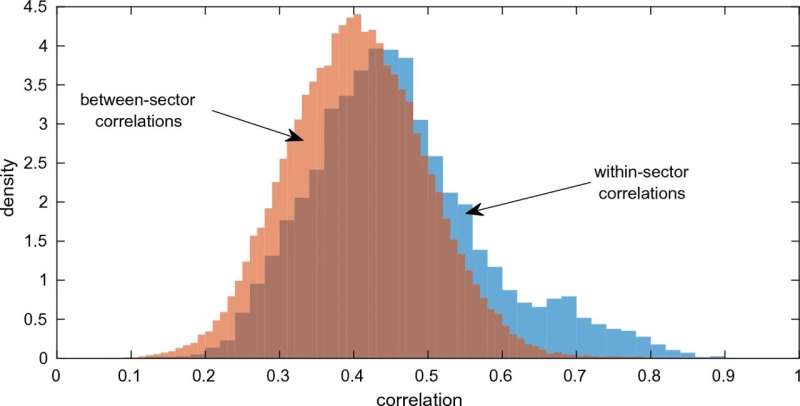This article has been reviewed according to Science X's editorial process and policies. Editors have highlighted the following attributes while ensuring the content's credibility:
fact-checked
trusted source
proofread
Bridging traditional economics and econophysics

In a new study, researchers of the Complexity Science Hub highlight the connecting elements between traditional financial market research and econophysics. "We want to create an overview of the models that exist in financial economics and those that researchers in physics and mathematics have developed so that everybody can benefit from it," explains Matthias Raddant from the Complexity Science Hub and the University for Continuing Education Krems.
Scientists from both fields try to classify or even predict how the market will behave. They aim to create a large-scale correlation matrix describing the correlation of one stock to all other stocks. "Progress, however, is often barely noticed, if at all, by researchers in other disciplines. Researchers in finance hardly know that physicists are researching similar topics and just call it something different. That's why we want to build a bridge," says Raddant.
What are the differences?
Experts in the traditional financial markets field are very concerned with accurately describing how volatile stocks are statistically. However, their fine-grained models no longer work adequately when the data set becomes too large and includes tens of thousands of stocks.
Physicists, on the other hand, can handle large amounts of data very well. Their motto is: "The more data I have, the nicer it is because then I can see certain regularities better," explains Raddant. They also work based on correlations, but they model financial markets as evolving complex networks.
These networks describe dependencies that can reveal asset comovement, i.e., which stocks behave fundamentally similarly and therefore group together. However, physicists and mathematicians may not know what insights already exist in the finance literature and what factors need to be considered.
Different language
In their study, Raddant and his co-author, CSH external faculty member Tiziana Di Matteo of King's College London, note that the mechanical parts that go into these models are often relatively similar, but their language is different. On the one hand, researchers in finance try to discover companies' connecting features.
On the other hand, physicists and mathematicians are working on creating order out of many time series of stocks, where certain regularities occur. "What physicists and mathematicians call regularities, economists call properties of companies, for example," says Raddant.
Avoiding research that gets lost
"Through this study, we wish to sensitize young scientists, in particular, who are working on an interdisciplinary basis in financial markets, to the connecting elements between the disciplines," says Raddant. So that researchers who do not come from financial economics know what the vocabulary is and what the essential research questions are that they have to address. Otherwise, there is a risk of producing research that is of no interest to anyone in finance and financial economics.
On the other hand, scientists from the disciplines traditionally involved with financial markets must understand how to describe large data sets and statistical regularities with methods from physics and network science.
The work is published in the Journal of Economic Interaction and Coordination.
More information: M. Raddant et al, A look at financial dependencies by means of econophysics and financial economics, Journal of Economic Interaction and Coordination (2023). DOI: 10.1007/s11403-023-00389-6
Provided by Complexity Science Hub Vienna

















